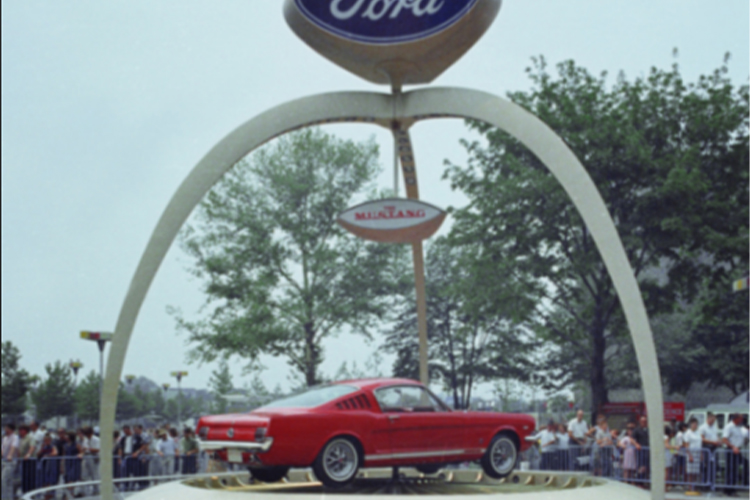For more than a decade now, Ford Mustang has been the world’s best-selling sports car and racked up more than 1 million sales since going global in 2015, and more than 10 million since it was unveiled on 17 April, 1964 at the New York World’s Fair.
The Unveiling of the 1964 Ford Mustang
With its long bonnet, short deck and sporty features, Mustang hit the sweet spot and dealers were swamped with 22,000 orders on the first day of sales. We look back at the birth of a legend.
The 1964 Ford Mustang went on-sale at a price of USD$2,368, weighed 1166kg, boasted a 170-cubic-inch six-cylinder engine, three-speed, floor-mounted automatic transmission and seated four people. To say it was an instant hit is an understatement, so popular was it that when 15 people in Texas bid on the same car, the winner asked to sleep in the car overnight so that it wouldn’t be sold underneath him while his cheque cleared.
Ford predicted Mustang would sell around 100,000 cars in its first year. It racked up 417,000 sales in its first 12-months on sale, and the one millionth Mustang had been sold by 1966. It wasn’t just the real Mustang that sold up a storm, parents purchased a staggering 93,000 pedal-powered children’s Mustangs during the 1964 Christmas season.
Capturing the Spirit of a Generation: From Prototype to Global Icon
What was Mustang’s appeal? With the 15-29 age group expected to grow 40 per cent in the US (and around the world) between 1960 and 1970, Ford laid out plans for a new kind of Ford vehicle. One that would appeal to a younger generation not interested in the conservative cars their parents drove. They wanted bucket seats, floor-mounted stick shifts and high-performance engines.
Ford determined this new vehicle should be small (no longer than 180 inches), light (no heavier than 1100kg) and inexpensive (no more than USD$2500 – most vehicles started at USD$3500). Styling needed to give a nod to the low profile of the Ford Thunderbird, seat four people and be fun to drive.
The Mustang I and II prototypes were named for the legendary P-51 Mustang fighter plane from World War II, although now they’re synonymous with the wild horse, so much so they’re known as the pony car.
Unmatched Customization: The Ford Mustang Experience
Part of Mustang’s appeal was that it could be whatever the buyer wanted, from a no-frills base car to a head-banging high-performance car or even a luxury car. It boasted the longest list of options Ford had ever offered.
From its early days until now, Ford Mustang has gotten longer, lower, wider and more powerful, seen drastic styling changes, oil crises, competitors and gone from a US-only model to a global car (140-plus markets), sold in Europe, Australia, the Middle East and Asia. Throughout its 60 years on-sale, Mustang has retained its every-person appeal and popularity, staking its place at the top of the sportscar sales tree with more than one million sales globally since 2015, and around 10 million since 1964.



